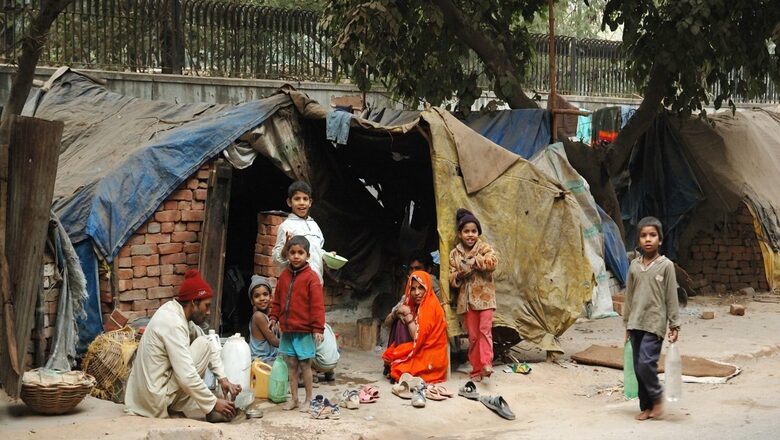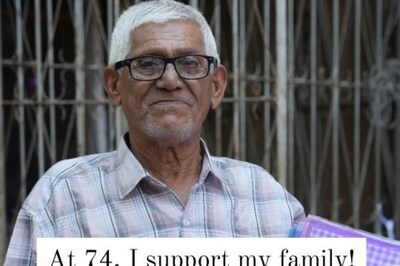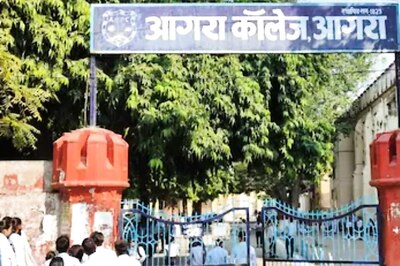
views
It’s heartening that the socio-economic development agenda pursued by Prime Minister Narendra Modi has begun to pay off rich dividends. On twelve development indicators that denote poverty levels, there has been substantive progress in the way 1.4 billion Indians live, pursue their aspirations and engage to achieve life objectives.
The ‘National Multidimensional Poverty Index: A Progress Review 2023’ report released by NITI Aayog a couple of days back is fairly comprehensive and widely accepted on methodology, sampling and computational tools. Going by this report, over 135 million Indians escaped poverty during 2015-21 under Prime Minister Modi-led BJP government. Many naysayers may tend to dispute these figures and findings. ‘Actual delivery’ and ‘plugging leakage of scarce resources’ in over a dozen of government schemes seem to have made this eminently possible.
The Multidimensional Poverty Index (MPI) was launched in 2021 in line with United Nations Development Programme (UNDP) and Oxford Poverty and Development Initiative (OPDI) surveys globally. Our own MPI covered 707 administrative districts in 28 states and eight Union Territories to derive that poverty is on a definitive decline curve in India. Significant changes have been reported on 12 indicators like nutrition, child and adolescent mortality, maternal health, years of schooling, school attendance, cooking fuel availability, sanitation, and access to clean drinking water, electricity, housing, assets, and bank accounts. These indicators have been spread across three broad areas i.e. education, healthcare and standard of living for Indians that was reviewed for the years 2015-16 to 2020-21.
The most significant finding of this survey has been that states like Uttar Pradesh have done extremely well with over 34.3 million people escaping poverty. States like Opposition-ruled Bihar, Rajasthan; BJD-ruled Odisha and BJP-held Madhya Pradesh seem to have performed well in tackling extreme poverty. Hitherto, these very states were regarded as laggards on socio-economic development parameters. The most interesting aspect is the steep reduction in poverty levels across rural India, dropping to 19.28 percent from 32.59 percent in the five-year period. But, poverty reduction has been at lower levels in cities at 5.27 percent from earlier 8.65 percent. Even after 10 percent aggregate decrease in poverty levels, the highest number of poor people continue to live in Bihar, Uttar Pradesh, Jharkhand, Meghalaya and Madhya Pradesh, going by the NITI Aayog report.
Now, the big question is whether the war on poverty in India has entered a decisive phase. Obviously, much more has to be done to turn India into a developed country by 2047 on all fronts including the Happiness Index. One sure way of measuring poverty as per UNDP was earnings at US $2 per day. There is no empirical data on number of people earning minimum wages in India. Statutorily, the national minimum wage per day was set at Rs 178. Though implementation at the ground level has been skewed, the minimum wage threshold translates to $1.92 as against $2 prescribed by UNDP for a developing country like India. Again, state-wise minimum wages are different thereby making an aggregate estimate virtually daunting. The accepted principle was that earnings and poverty alleviation have an undeniable link thereby making wages singularly one of the most important parameters in counting the poor and tackling the menace.
Challenges to alleviating poverty in India is definitely a herculean task that demands newer socio-economic development models that are neither Western-driven nor communist way of commanding heights principle. Reaching out to the last man standing in the true spirit of ‘antyodaya’ or ‘sarvodaya’, and taking everyone into inclusive development mode is the sure-shot prescription to wiping out poverty in Bharat. In fact, that was pushed for by philosophers like Vinoba Bhave, Deen Dayal Upadhyaya and veteran labour leader Dattopant Thengdi and rejected by the Western economists’ gang. A tectonic shift in the economic development model may have to be seriously attempted by the new government that takes charge in 2024, be it the National Democratic Alliance led by Prime Minister Narendra Modi or the Opposition alliance of 26 political parties — INDIA — that seek to meekly challenge him.
Shifting gears may not be easy if the war on poverty has to be won in the least possible time and not wait till 2047, the centennial of Bharat’s independence. For this to happen, taking the Indian growth story down below the district centres to evolve ‘self-reliant’ vibrant village clusters is an alternative that the next government can seriously consider. Going beyond districts and evolving villages-clusters is something that has only been talked about in seminar rooms and not attempted as a serious development model that’s unique to India. Strengthening grassroots governance, especially in hinterlands as single window shops, is one way to attack poverty and achieve self-reliance.
As the BJP gears up to roll out its manifesto for the next five years and vision document for the next 25 years, taking governance to people’s doorstep is something it can consider as a paradigm shift in its approach to eliminating poverty. Secondly, defining our own yardstick on ‘poverty’ is something that development experts may consider in the next phase of India’s development strategy. Is earning $2 or $3 per day the benchmark or does something beyond this bread-and-butter issue needs serious consideration? Thirdly, migration as a phenomenon has taken India by storm in the last 75 years, mostly after economic reforms of Harvard variety were forced down by Dr Manmohan Singh and his team. Migration from villages to urban centres and beyond to foreign shores has gripped this country which marks a huge brain drain as well. Unless a holistic view of this phenomenon is taken, can we win the war against poverty?
Fourthly, a family-centric approach to the socio-economic conundrum confronting Indian people may widen the canvas for war on poverty as it pushes for a basic shift in societal structures, shaking away the unrealistic Western or socialistic foundations. Fifthly, redoing Indian society with spiritual content to happiness will complete the cycle in war against poverty. Finding holistic solutions to the inadequacy of resources, governance at the grassroots, earnings, development parameters, mind and spirit should be addressed by the next government.
The author is Director & Chief Executive, Centre for Integrated and Holistic Studies, a non-partisan think tank based in New Delhi. Views expressed in the above piece are personal and solely that of the author. They do not necessarily reflect News18’s views.




















Comments
0 comment